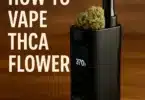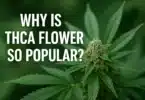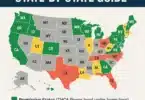These days, you’d be hard pressed to find someone who isn’t using some type of cannabis product – either recreationally, therapeutically, or both… but have you ever wondered how everyone seems able to afford it?
Although many industries are struggling amid the ongoing pandemic, 2020 has been a record year for cannabis with prices and demand both at an all-time high. Everything from smokables to edibles, THC and CBD, dispensary and mail-order – everywhere you look there is a trending cannabis-based product.
What’s also holding firm, and increasing in many markets, is the prices for all the aforementioned items. In addition to cannabis being portrayed more favorably by the mainstream media, COVID-driven demand over the last year coupled with bottlenecks in supply has caused a surge in prices. And according to the U.S. Cannabis Spot Index Report, the average wholesale price per pound has reached its highest point in three years.
So, again that begs the question, how does it seem that everyone can afford these products so easily; considering high quality comes with an equally high price tag, and these products aren’t covered by insurance. We know they’re effective and safe, but are cannabis products an affordable alternative to prescription medication?
To learn more about cannabis, and for exclusive deals on flowers and other products, subscribe to The CBD Flowers Weekly Newsletter
Benefits of medical cannabis
I believe this is an important staring point, because it’s the therapeutic aspect of cannabis that’s really behind this burgeoning demand. It has been used recreationally for decades, but it wasn’t until word got out about the safety profile and medical benefits that cannabis products really saw a surge in popularity.
In the United States, the most common use for medical cannabis is pain management. Although it isn’t really strong enough for very severe pain, post-surgical for example, it’s highly effective in controlling various forms of chronic pain that effects millions of Americans. Cannabis is frequently endorsed as a safer alternative to opiate medication, which are dangerously addictive and responsible for an alarming number of overdose deaths in the states.
Cannabis can also replace over-the-counter (OTC) pain medication like Tylenol, Aspirin, Advil, and Ibuprofen, all of which are known to cause long-term damage to the kidneys and liver, and can lead to chronic health conditions including GERD, high blood pressure, and ulcers. In this vein, cannabis is also used to ease nerve pain, such as the pain associated with multiple sclerosis (MS) and lupus.
Medicinal cannabis is also said to be a fantastic muscle relaxant, and it’s frequently used to lessen tremors in patients with Parkinson’s disease. Likewise, it can be used to relieve symptoms of Restless Leg Syndrome, as this disorder sometimes responds to medications that are used to treat Parkinson’s as well. There are many reports of it being used successfully for fibromyalgia, endometriosis, interstitial cystitis, and most other conditions where the final common pathway is chronic pain.
Another very common use for medical cannabis is to manage nausea and weight loss. Studies show tetrahydrocannabinol (THC), the most abundant cannabinoid in the plant, can help treat glaucoma by successfully reducing intraocular pressure. Cannabidiol (CBD), the second most prominent cannabinoid is used for a growing number of ailments including inflammation and epilepsy. The only FDA-approved, cannabis-based medication is an oral solution comprised mostly of CBD.
Another very promising area of cannabis research is in the field of mental health. Numbers from the National Alliance on Mental Illness show that 1 in 5 Americans struggle with mental illness, and further research indications that the COVID-pandemic has mental health on the decline. So far, anecdotal evidence shows that cannabis is great for treating depression, curbing addictions to other substances, and alleviating anxiety. Many veterans and their therapists report drastic improvement for those dealing with PTSD and are pushing for legalization and more studies.
The Endocannabinoid System
To understand why cannabinoids are so effective and capable of targeting such a varied range of conditions, you will need to have a better understanding of the Endocannabinoid System (ECS). The ECS is a network of receptors that can be found throughout the bodies of all mammals. We naturally create cannabinoids in our bodies – called endocannabinoids – which bond to these receptors to regulate different processes in our bodies and maintain internal balance and harmony.
So far, researchers have been able to identify two separate endocannabinoids: 2-arachidonoylglycerol (2-AG) and anandamide (AEA), as well as two main receptors: CB1 and CB2. 2-AG is a full agonist of both the CB1 and CB2 receptors but it has a more direct association with the CB2 receptor. Because of this, 2-AG is thought to have a substantial influence over the immune system.
Anandamide – or AEA – also casually known as the “bliss molecule”, has a major impact on our state of homeostasis. AEA can help manage things such as appetite, sleep wake cycles, pain response, and then some. Our bodies continuously cycle through anandamide. It breaks down very easily, so it doesn’t stay in the body for long. However, our bodies create it on-demand to maintain homeostasis.
There is a condition referred to as ‘cannabinoid deficiency’, characterized by a body’s inability to produce endocannabinoids. Some experts theorize that many illnesses we suffer from, stem from this shortage of endocannabinoids.
High price tags from coast to coast
A recent survey conducted by the state of Ohio found that roughly 60% of patients and caregivers are frustrated with the prices of medical cannabis products at their local dispensaries. The poll discovered that, on average, people were paying around $300 monthly for cannabis, all out of pocket.
“Why are these products so expensive? Does Ohio realize that those prescribed mmj (medical marijuana) often deal with symptoms that make working full-time difficult?” questioned one of the survey respondents.
And this issue is certainly not limited to Ohio. Across the country, cannabis prices are teetering bordering on the edge completely unreasonable and downright unaffordable. In states like Michigan, Illinois, and California, the average cost of a high-quality ounce of medicinal bud is between $255 and $380, and people using weed medicinally typically smoke one to two (sometimes more) ounces per month. You can do the math on that one, it’s not cheap.
In Pennsylvania, the situation is no different. A recent article from The Philadelphia Inquirer pegs the state as one of the nation’s most expensive medical cannabis markets. Everything from profiteering to supply issues has been named as a cause of this issue but the truth is, the state’s industry seems a lot like California’s with a lack of oversight on pricing. State officials from the PA medical marijuana advisory board say that patients are frequently complaining about the ridiculous costs.
Wholesale costs aren’t much better. On average, a decent, mid-shelf outdoor pound will run you $1,327/lb to $1,470/lb. Top of the line indoor flower is selling for between $3,215 and $3,552. The prices were observed nationwide in the following states: California, Colorado, Oregon, Massachusetts, Ohio, and Pennsylvania.
“Outraged about the prices”
Again, we know that cannabis works as medicine. Some of the many reason are listed above. We also know that it’s much safer than the pharmaceutical counterparts. However, until it’s covered by insurance plans or the prices go down significantly, many patients who need it will simply not be able to afford it.
Spending hundreds of dollars a month on medical cannabis is outside the realm of possibility for many people who can just turn to their prescription insurance plan and get medication for very little money out of pocket. It circles back around to this concept that only people with money deserve to consume things that are natural and healthy, when people in low income living situations have equal to and sometimes higher rates of disease, chronic pain, and mental illness.
“The patient community is always outraged about the prices,” said Luke Shultz, an Ohio-state marijuana advisory board member. “I’m not sure where the price should be. But we’d sure like to see it lower.”
Federal prohibition making matters complicated
It could be argued that the reason medical cannabis is a “flawed concept” is because it’s still federally illegal. It’s nearly impossible to have a low-cost “medication” when the main ingredient in that medication is a Schedule 1 narcotic that can’t legally be studied in the United States. Since it’s technically illegal, it won’t be covered by any insurance plans, it’s not administered in hospitals (like it is in other countries such as Israel), and it can’t be purchased over-the-counter in pharmacies like CVS or Walgreens.
Doctors can give “recommendations” for medical cannabis, but that’s not the same as a prescription that can be turned in at any local pharmacy. Also, because of its current legal status, most doctors are weary to even recommend it or have open discussions on the subject at all, leaving patients confused about what the benefits could be and stuck in the pharmaceutical cycle.
Final thoughts
Back when cannabis first became legal (recreationally) in California, the prices plummeted. It was easy to find a top-shelf ounce for around $60. Those prices have more than doubled in the last few years and all we can hope for is that the costs level out and start to drop over the coming months as local supplies begin to stabilize.
Thanks for joining us at CBDtesters.co, your prime location for all cannabis-related news. Come by frequently to stay in-the-loop, and sign up to our newsletter so you’re always in the know!
Resources:
It’s Not Your Parents’ THC – Welcome Cannabidiolic Acid Methyl Ester
Canadian Hemp Acreage and Export Value Up More Than 20%
Cannabis Prices in the United States
India’s Bhang Loophole, and the Question of Legalization
Interview with Raphael Mechoulam: The Father of Cannabis Research
Canadian Study Says Cannabis Worse Than Alcohol Best Deal Of The Year – $9.99 Delta 8 THC Vape Cartridges
Cannabis Taxing and Prices Across the Globe
What is DELTA 8 THC (FAQ: Great resource to learn about DELTA 8THC)
Time to Vote: Will WHO Cannabis Recommendations Be Accepted?
Prestigious Harvey Prize, a Predictor of the Nobel Prize Goes to Raphael Mechoulam
The CBD Flowers Weekly newsletter (your top resource for all things smokable hemp flowers)
The Medical Cannabis Weekly newsletter (International medical cannabis business report)
Lebanon Legalized Medical Cannabis, 1st in Arab World
The Delta 8 Weekly Newsletter (All you need to know about Delta 8 thc) and the Best Black Friday Delta 8 THC Deals 2020. Cannabis Election Results –Why Israel Is (and will continue to be) A Global Leader in the Cannabis Industry Best hemp flower deals
Current CBD Deals And Exclusive Offers
Israeli Researchers Work on CBD-Based Treatment for COVID-19
Customize Your Cannabinoids – Now You Can Mix’ N’ Match
Cannabis Falling from the Sky in Israel Best Delta-8 THC Deals, Coupons and Discounts.
Cannabis Remains Schedule I After UN Vote
EU Beat France, CBD Legal Throughout EU







